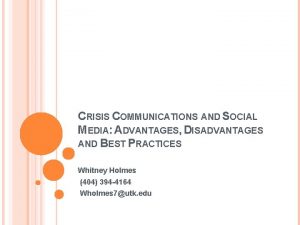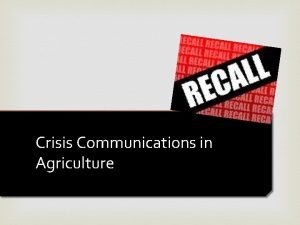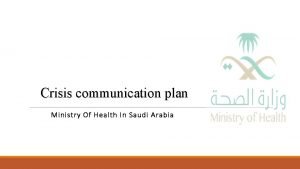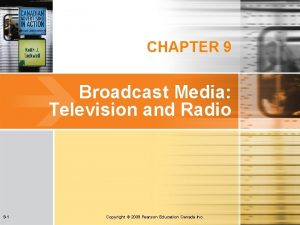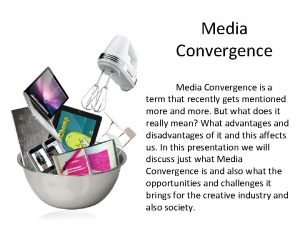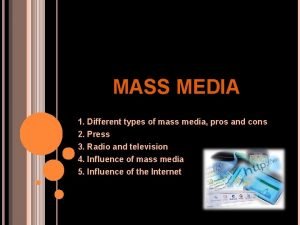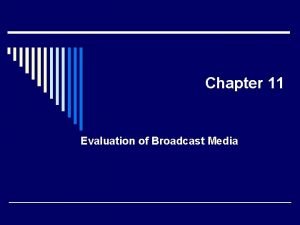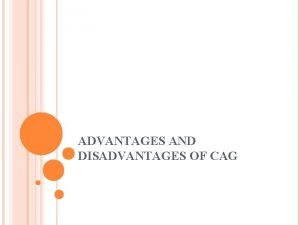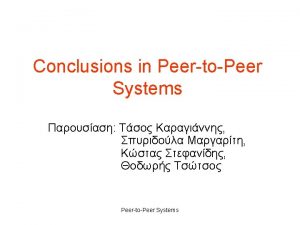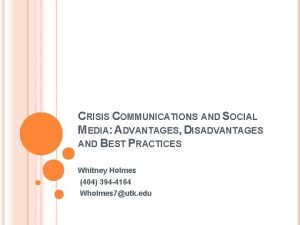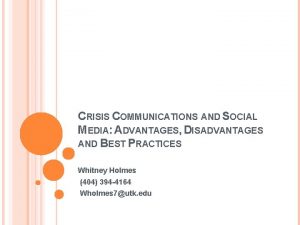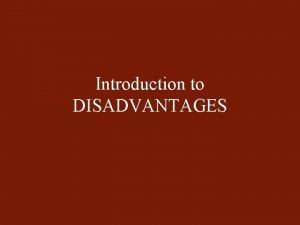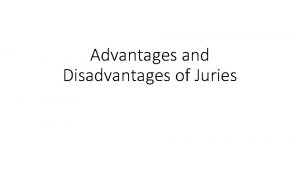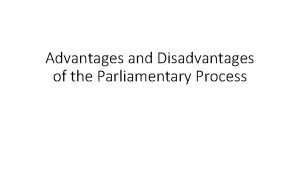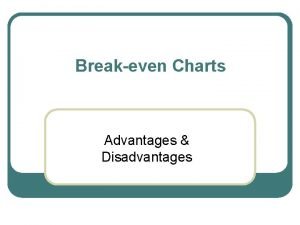CRISIS COMMUNICATIONS AND SOCIAL MEDIA ADVANTAGES DISADVANTAGES AND













- Slides: 13

CRISIS COMMUNICATIONS AND SOCIAL MEDIA: ADVANTAGES, DISADVANTAGES AND BEST PRACTICES Whitney Holmes (404) 394 -4164 Wholmes 7@utk. edu

CRISIS COMMUNICATIONS AND SOCIAL MEDIA: THEORETICAL APPROACH With media proliferation, Crisis Communications is important now more than ever. Social media can help or hurt your company depending on how you well use it. This paper will explore the positive and negative impacts Social Media can have on Crisis Communications. It will also suggest how to implement Social Media into Crisis Communications strategies.

CRISIS COMMUNICATIONS AND SOCIAL MEDIA: METHODOLOGY Performed an in-depth literature review. Analyzed varying definitions of crisis, crisis types, and Crisis Communications. Examined the stages of Crisis Communications , as well as highlighting a few related crisis communication functions, strategies, models and theories. Focused on the positive and negative impact of social media on the practice of Crisis Communications.

CRISIS COMMUNICATIONS AND SOCIAL MEDIA: RESEARCH QUESTIONS What is Crisis? Crisis Types? What is Crisis Communications? What are the stages of Crisis Communications? What is the role of Social Media and Mobile Technology? What negative impact does Social Media have on Crisis Communications? What positive impact does Social Media have on Crisis Communications?

CRISIS COMMUNICATIONS AND SOCIAL MEDIA: KEY FINDINGS Broadly defined Social Media has two key advantages for Crisis Communications. Broadly defined Social Media has two key disadvantages for Crisis Communications.

CRISIS COMMUNICATIONS AND SOCIAL MEDIA: ROLE OF SOCIAL MEDIA/TECHNOLOGY On Jan. 15, 2009, Janis Krums’ took a picture that was viewed 40, 000 within 3 hours via Twit. Pic. Everyone has the potential to be watchdogs, citizen journalists and photojournalists. The convergence of old and new technology is allowing people to converge during times of crises in old and news ways. People act the same online as they do on the ground in times of crisis.

CRISIS COMMUNICATIONS AND SOCIAL MEDIA: ADVANTAGE 1: STAKEHOLDER "SENSEMAKING" During crises, people try to make sense of what is happening around them, called “sensemaking. ” Social Media that uses pictures and videos is a very effective avenue for doing this. Groups designated as “image aggregators” have been set up on Flickr in times of crises as a way for stakeholders to cope with the crises. This happened during hurricanes Katrina and Rita and the Virginia Tech shootings.

CRISIS COMMUNICATIONS AND SOCIAL MEDIA: ADVANTAGE 2: AIDING IN CRISIS COMMUNICATIONS Sensemaking helps crisis responders by supplying useful information about the emergency to crisis communicators and other stakeholders. It is another means of communication for disaster survivors, curious onlookers, and compassionate helpers inside and outside the disaster. Examples include the 2007 Southern California wildfires, SARS outbreak in China, and Mumbai Bombings.

CRISIS COMMUNICATIONS AND SOCIAL MEDIA: DISADVANTAGE 1: SOCIAL MEDIA AS THE SOURCE OF MISINFORMATION Social Media can facilitate or exacerbate crises by spreading negative information or misinformation at an incredible speed. This makes controlling narratives difficult. Social Media can also create a lot of noise in which stakeholders need to sift through to find or send relevant information.

CRISIS COMMUNICATIONS AND SOCIAL MEDIA: DISADVANTAGE 2: SOCIAL MEDIA AS A CRISIS TRIGGER Social Media may also trigger crises in the form of rumors, hacking, shadow or copycat websites, web security breaks, and all forms of cyber-terrorism. For instance, in 1994 Intel had to replace thousands of Pentium chips when a math professor discovered a flaw and posted it on the internet. Big corporations such as Mc. Donald’s all have spoof copy cat websites that can, or have, posed problems for the companies.

CRISIS COMMUNICATIONS AND SOCIAL MEDIA: OTHER TIPS FOR IMPLEMENTATION Build relationships with stakeholders so they know where to find you in times of crises. Whatever tone an organization has with its stakeholders already will carry over with its social media policy. But, Social Media allows that relationship to be stronger with easier more relaxed contact. A stronger relationship means a stronger reputation which helps in Crisis Communications. An organization that ignores the power of this new communications tool is an organization that may suffer more harm than necessary during a crisis, as well and more importantly the potentially negative health and safety impacts on their stakeholders.

CRISIS COMMUNICATIONS AND SOCIAL MEDIA: SOCIAL MEDIA IN PRACTICE � Some entities are already beginning to incorporate social media into their crisis communications plans. � For examples, a tweet helped the State Department rescue a survivor of the Haitian earthquake. � CDC, FEMA and American Red Cross are implementing social media into their crisis communications plans as well.

CRISIS COMMUNICATIONS AND SOCIAL MEDIA: FINAL THOUGHTS There is little non-anecdotal research into the preferences of stakeholders when it comes to Social Media. Not much is known on how effective social media is in framing messages and perceptions in times of crises. More research is needed as to how crisis communicators can use the new media to harness useful information, reach fragmented audiences, and blunt potential crises. The better crisis communicators understand this tool, the better they can use it to their advantage in times of crises, to help both their organization and their stakeholders. QUESTIONS?
 Social media communication advantages and disadvantages
Social media communication advantages and disadvantages Advantages and disadvantages of overhead transparencies
Advantages and disadvantages of overhead transparencies Dominos crisis
Dominos crisis Crisis communications working group
Crisis communications working group Crisis communications lecture
Crisis communications lecture Saudi arabia crisis communications
Saudi arabia crisis communications Acetylcholine crisis
Acetylcholine crisis Broadcast media advantages and disadvantages
Broadcast media advantages and disadvantages Mass media advantages and disadvantages
Mass media advantages and disadvantages Advantage and disadvantage of media convergence
Advantage and disadvantage of media convergence Kind of mass media
Kind of mass media Broadcast media advantages and disadvantages
Broadcast media advantages and disadvantages Specialty media advantages and disadvantages
Specialty media advantages and disadvantages Specialty media advantages and disadvantages
Specialty media advantages and disadvantages
